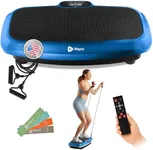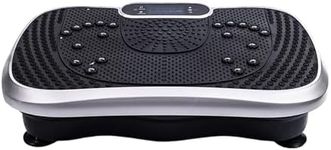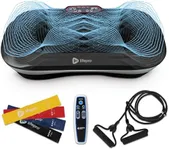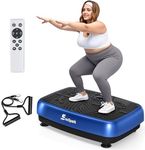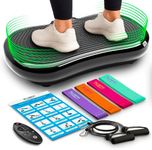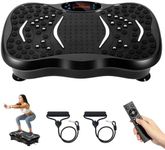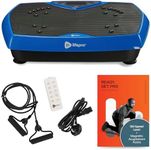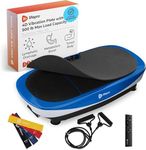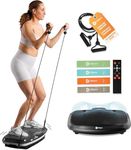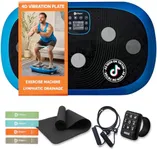Buying Guide for the Best Vibration Machines
Vibration machines are a popular fitness tool designed to help improve muscle strength, flexibility, and overall fitness. When choosing a vibration machine, it's important to consider several key specifications to ensure you select the best fit for your needs. Understanding these specifications will help you make an informed decision and get the most out of your investment.Vibration TypeVibration type refers to the way the machine generates vibrations. There are three main types: oscillating, vertical, and triplanar. Oscillating machines move side to side, mimicking a see-saw motion, which is great for weight loss and improving balance. Vertical machines move up and down, providing a more intense workout suitable for muscle building. Triplanar machines combine both movements for a comprehensive workout. Choose the type based on your fitness goals: oscillating for general fitness and weight loss, vertical for muscle building, and triplanar for a full-body workout.
Frequency RangeFrequency range indicates how many vibrations per second the machine can produce, measured in Hertz (Hz). A lower frequency (5-20 Hz) is ideal for relaxation and recovery, while a mid-range frequency (20-40 Hz) is suitable for general fitness and weight loss. Higher frequencies (40-60 Hz) are best for muscle strengthening and intense workouts. Consider your fitness level and goals when selecting the frequency range; beginners may prefer lower frequencies, while advanced users might benefit from higher frequencies.
AmplitudeAmplitude measures the extent of the vibration movement, typically in millimeters (mm). A lower amplitude (1-2 mm) provides a gentle massage effect, suitable for beginners or those looking for relaxation. A higher amplitude (3-5 mm) offers a more intense workout, ideal for muscle toning and strength training. Choose an amplitude that matches your comfort level and fitness objectives; lower amplitudes for gentle workouts and higher amplitudes for more vigorous exercise.
Platform SizePlatform size refers to the surface area where you stand or perform exercises. A larger platform allows for a greater variety of exercises and more comfortable movement, while a smaller platform is more compact and easier to store. If you plan to perform a wide range of exercises or need more space for stability, opt for a larger platform. For limited space or simpler workouts, a smaller platform may suffice.
Weight CapacityWeight capacity indicates the maximum user weight the machine can support. It's important to choose a machine that can comfortably support your weight to ensure safety and durability. Check the manufacturer's specifications and select a machine with a weight capacity that exceeds your body weight to allow for additional resistance or weights during workouts.
Pre-set ProgramsPre-set programs are built-in workout routines designed to target specific fitness goals, such as weight loss, muscle toning, or relaxation. These programs can be convenient for users who prefer guided workouts. If you enjoy variety and structured routines, look for a machine with multiple pre-set programs. If you prefer to customize your workouts, this feature may be less important.
Additional FeaturesAdditional features can enhance your workout experience and include elements like remote controls, Bluetooth connectivity, built-in speakers, and heart rate monitors. These features can add convenience and motivation to your workouts. Consider which additional features are important to you and how they align with your fitness goals and preferences.
